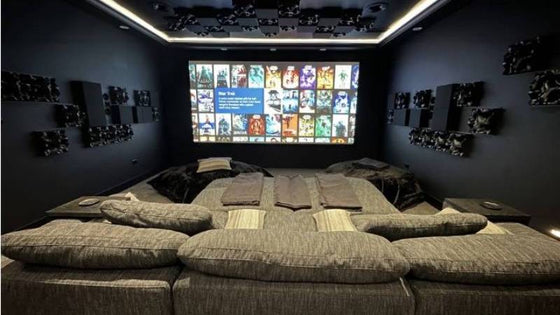Creating a system you love shouldn't be difficult. The Acoustic Frontiers blog is here to help.

Deep nulls in the frequency response in the bass region can be caused by phase cancellation between the direct sound wave from a sound producing device and the indirect sound wave that has reflected from a nearby boundary such as the floor, ceiling or walls. This phenomenon is called speaker boundary interference or SBIR for short. This measurement shows an example of SBIR effects:

This relationship between cancellation frequency and path length difference can be exploited to remove SBIR effects.
A simplified example and picture will help illustrate both SBIR and how using a subwoofer can reduce its effects.

Take the common situation of a speaker which is placed 4ft out from the back wall as in the diagram. Using the formula introduced above we can calculate a cancellation at 71Hz due to a path length difference between the direct and indirect sound of 8ft. Now a sub is introduced into the system and a crossover point of 80Hz selected. The sub is placed 1ft from the back wall. Calculating the theoretical cancellation frequency for the sub, we see that this is at 141 282Hz. Since the sub is crossed over at 80Hz there is only limited cancellation at 141 282Hz since the frequency response is many dB down as a result of the rolloff of frequencies above the crossover point. The cancellation caused by the main speakers being 4ft out from the back wall is also reduced since the crossover is attenuating frequencies below the crossover point.
What do you think about this cunning subwoofery?
This media room was intentionally designed to feel like part of the home—not a separate, tech-heavy space. Through careful acoustic planning, equipment integration, and final calibration, we achieved a room that is both beautiful to live in and immersive to experience.
"No other subwoofer system I’ve owned even comes close to what this room delivers. Reaching out to Acoustic Frontiers was one of the best decisions I’ve made—I highly recommend working with them if you want to get the most out of your theater."

Nyal Mellor, Founder, Acoustic Frontiers



Nyal Mellor
Author